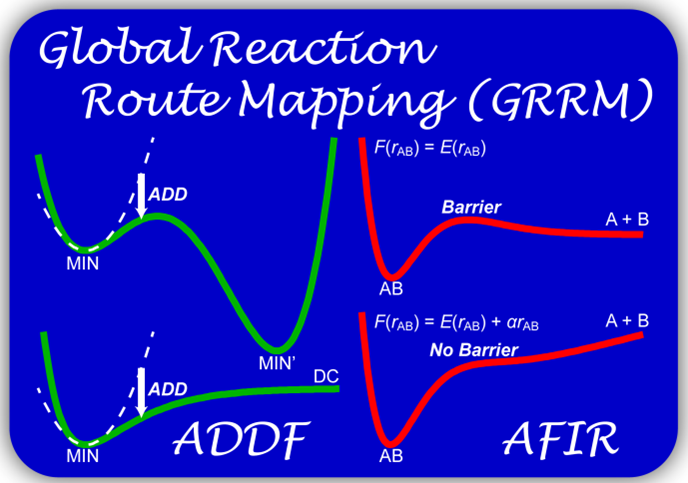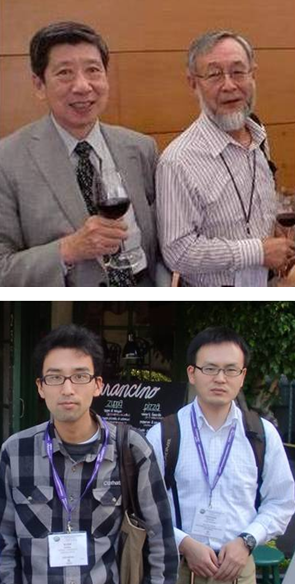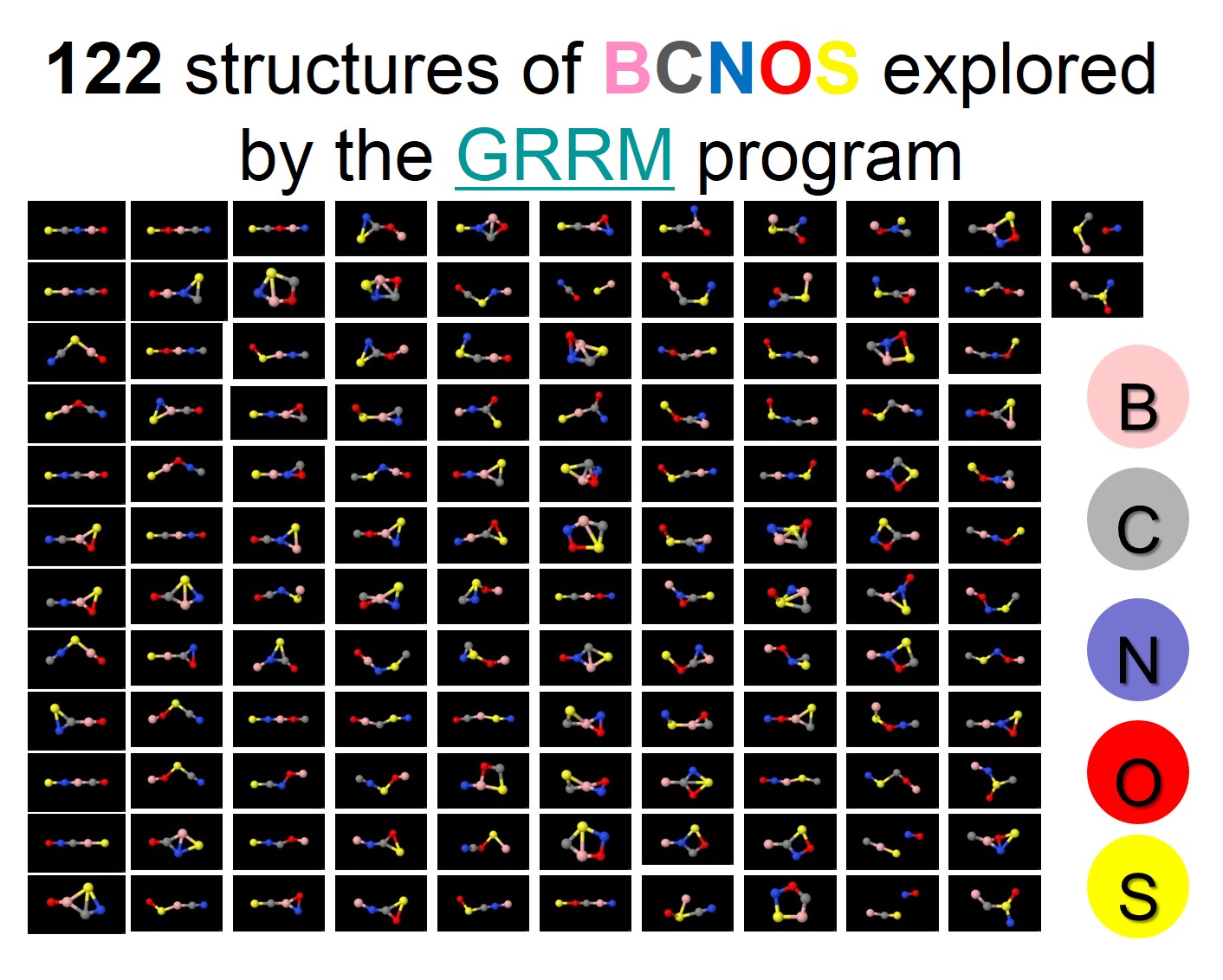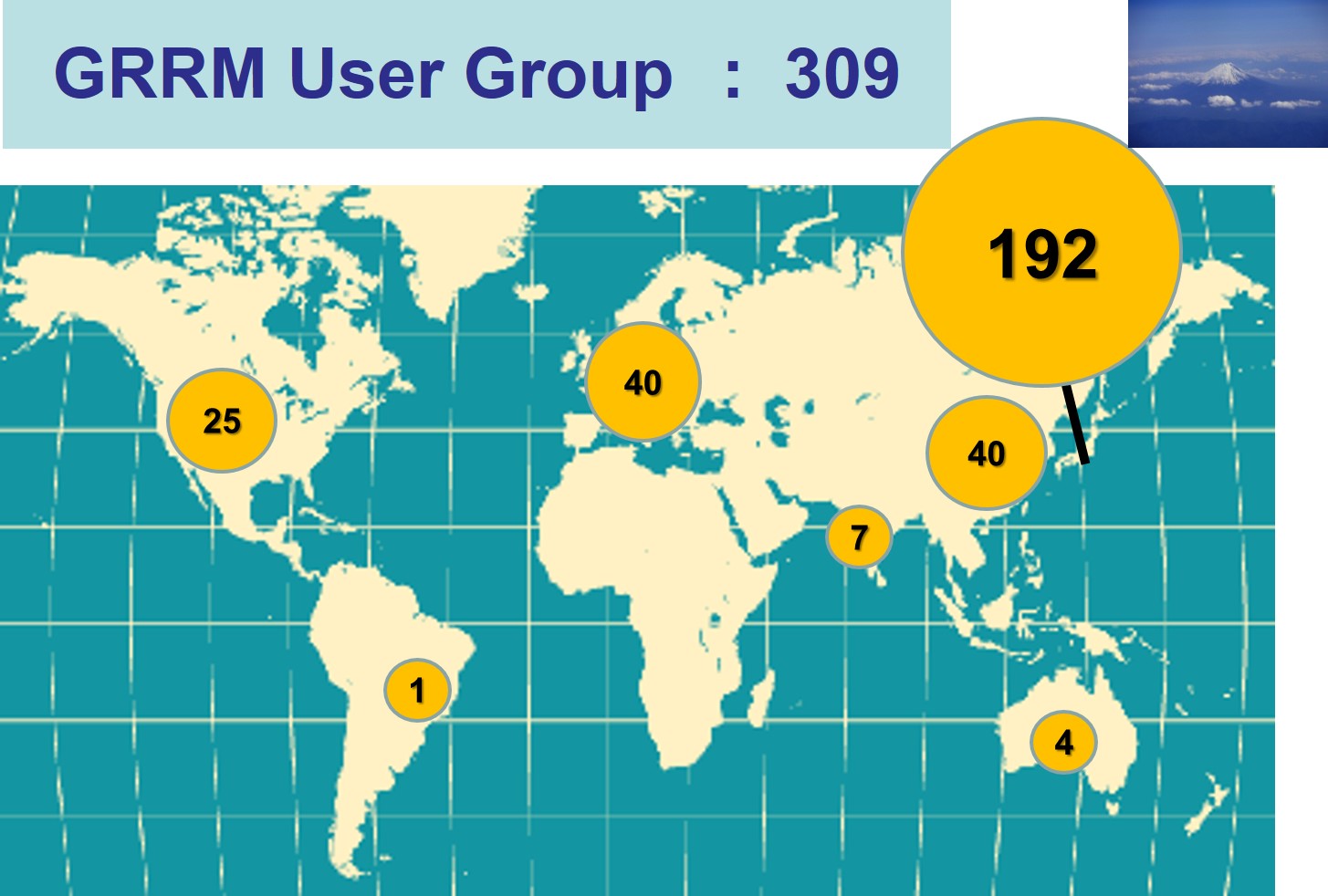


GRRM Strategy
Chemical reactions are grouped into the following four types.(1) A --> X (Isomerization)
(2) A --> X+Y (Dissociation)
(3) A+B --> X (Combining Synthesis)
(4) A+B --> X+Y (Exchanging Synthesis)
Among these types, (1) and (2) are directly explored by the ADD following (ADDF) algorithm. Exploration of (2) leads to reverse reactions of type (3), thus ADDF generates three types of reactions (1)-(3). AFIR algorithm quickly generates two body reactions of (3) and (4). Therefore, combination of ADDF and AFIR provides us a powerful tool for finding all types of chemical reactions, and one may call this approach as the GRRM strategy(cf. reference below).
It is interesting that the famous cyclic processes in the hydroformylation reaction using cobalt catalysts can quickly be explored by the AFIR method (cf. reference below). Initially, ADDF cannot provides any information concerning (4), but some reactions of type (4) have been found by ADDF; for example, quite recently, a direct channel for the water gas shift reaction (H2O+CO --> H2+CO2) has been discivered by ADDF. It should of course be noted that not all channels of type (4) can be explored by the ADDF approach only.
The GRRM strategy opens unknown chemistry of all types (1)-(4), and it will provide useful information to construct a beautiful world of humankind.
Reference for GRRM sterategy
Systematic Exploration of the Mechanism of Chemical Reactions: Global ReactionRoute Mapping (GRRM) Strategy by the ADDF and AFIR Methods
Phys. Chem. Chem. Phys., 15, 3683-3701 (2013).
Satoshi Maeda, Koichi Ohno, and Keiji Morokuma




